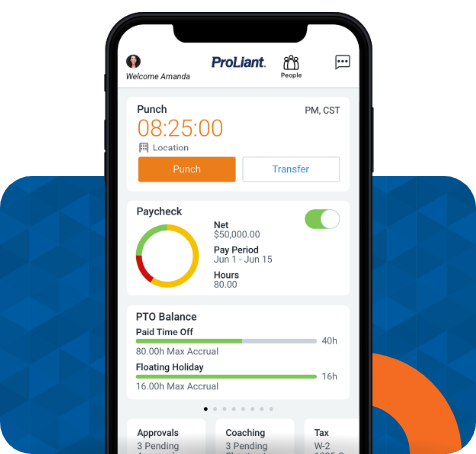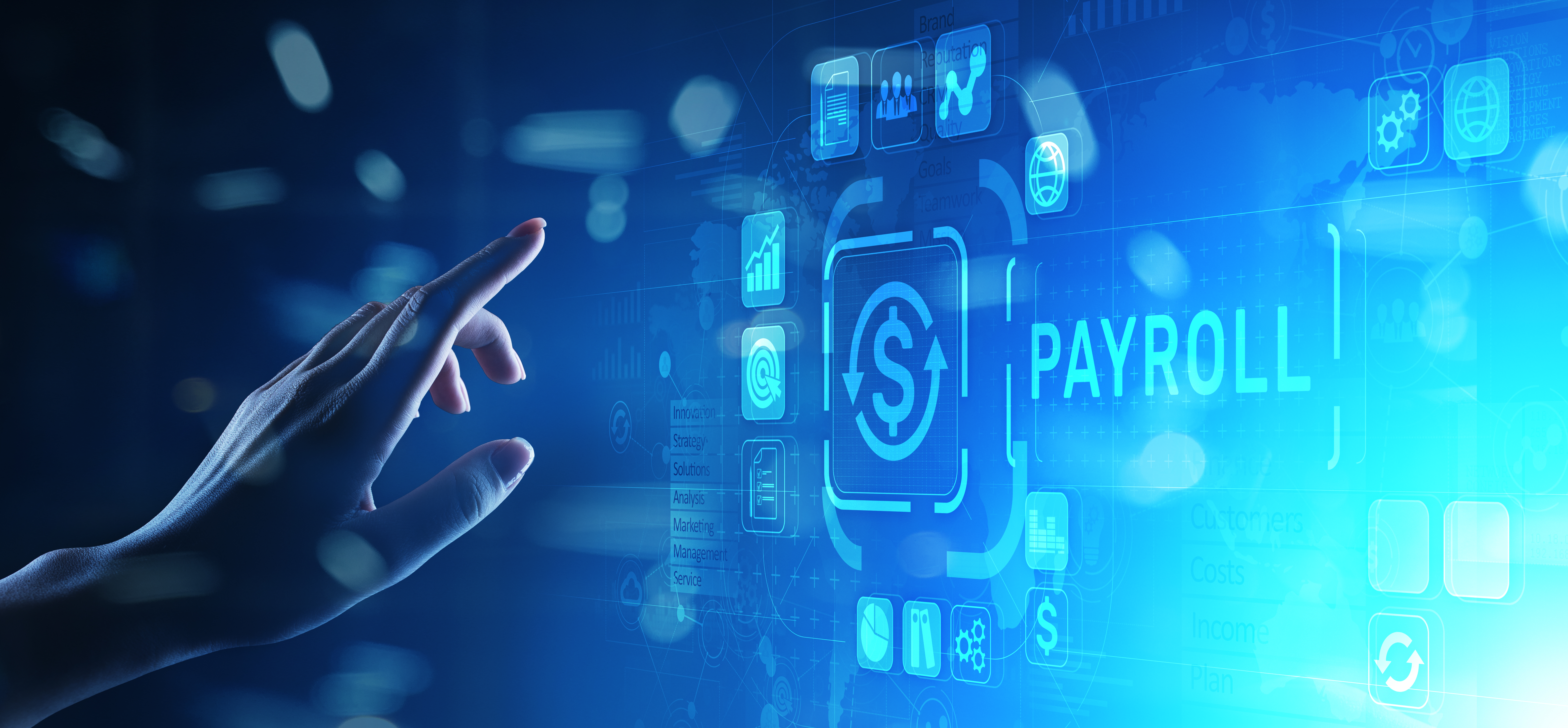Human resource (HR) software is becoming increasingly vital to business operations as the world lurches further into a technological age marked by rapid advancement. Organizations continuing to rely on paper-based methods and manual processes for keeping up with and organizing employee data are sure to be left in the dust or suffer the consequences of human error when remaining compliant with ever-changing tax laws and employment regulations. However, knowing which HR software is best for your business can be tricky, especially with vendors throwing around various terms and acronyms like HCM, HRIS, and HRMS.
In this blog, we will clarify the difference between HCM, HRIS, and HRMS so that you can better understand what you are looking for when purchasing HR software for your organization.
What is HCM?
Human Capital Management (HCM) refers to ways traditional HR functions can be more efficient and generate improved business results. HCM takes administrative processes, such as recruitment and talent acquisition, onboarding and training, payroll and benefits management, and performance management, and finds ways to make them work for increased productivity, employee engagement, and business value.
How does HCM work?
HCM looks at employees as core business assets with value to be enhanced through intelligent investment and management. This type of software assists business owners in nurturing their employees with a comprehensive approach by bringing essential HR functions, like talent management, payroll, analytics, reporting, and more, together into one system.
Core modules and components of HCM systems
HCM systems may have a wide range of functionalities and modules. Core modules and components typically include:
- Human Resource Administration: This module is the foundation of the HCM system and manages employee data and organizational structures.
- Applicant Tracking and Recruitment: This module streamlines the recruitment and hiring process, from posting jobs to job boards to onboarding and training.
- Performance Management: This module assists management with creating employee goals, conducting employee reviews, and providing feedback.
- Learning Management Systems: This module can take many forms but will always focus on employee training and development. Typically, these modules will include tools for creating educational content, managing training programs, tracking employee progress, and assessing employee knowledge and development.
- Time and Attendance: This module automates time tracking and attendance management by integrating with time clocks and biometric systems.
- Payroll: Payroll modules handle payroll processing, taxes, and compliance with labor laws. They make sure employees are paid accurately and on time.
- Employee Self-Service and Manager Self-Service: These features allow employees and managers to access and update their personal information without having to contact HR. Employees can view pay stubs, request leave, and update demographic information. Managers can approve time off requests and handle other team-related tasks.
- Analytics and Reporting: HCM systems often include advanced reporting and analytics. HR teams use these tools to make data-driven decisions and identify areas for improvement.
The modules available will vary depending on the HCM software provider. A business can choose specific modules to create a comprehensive and efficient HCM system that meets its unique needs.
What is HRIS?
A human resource information system (HRIS) is software designed to assist businesses with core HR needs while improving the productivity of managers and employees. HRIS helps human resources professionals and business owners organize and track employees and manage payroll, but businesses can use these systems for much more.
How Does HRIS Work?
HRIS systems integrate various HR functions into a single system that shares data and creates reports across an entire platform. For example, employee information gathered from as early as recruitment and onboarding will flow into other systems like payroll, time management, benefits administration, and more.
Key Features and Capabilities of HRIS
An HRIS provides many features and capabilities to help human resource departments, including:
- Employee demographics
- Payroll
- Benefits administration
- Recruiting and talent acquisition
- Time management and attendance
- Employee self-service
- Earned wage access
In addition to assisting with employee demographic information, payroll, benefits elections, and more, some HRIS can keep your organization updated on tax and employment regulations.
Benefits and Advantages of HRIS Implementation
HRIS makes it easy for people to connect with their workflows while streamlining day-to-day operations for greater productivity. An HRIS could be considered the most essential tool for an organization’s HR team. Here are a few benefits and advantages of HRIS implementation:
More Accurate Reporting: Because HRIS eliminates manual HR processes involving outdated paper-based organization methods, businesses that use these systems have an easier time creating accurate record-keeping and reporting.
Reduced Errors: HRIS eliminates human error by reducing the duplication of processes and keeping all HR information in one place.
Increased Employee Engagement: With solutions like employee self-service and team management tools, employee engagement is greatly improved.
Differentiating HCM from traditional HRIS
HCM and HRIS are human resource management software systems that differ in scope and functionality. An HRIS focuses on automating HR administrative tasks, while HCM software is made of all HRIS processes and systems. HCM software includes functionality for recruitment, onboarding, employee training and development, performance management, time management, benefits management, employee and manager self-service, on-demand pay solutions, and anything else that falls under the umbrella of human resources.
What is HRMS?
A human resource management system (HRMS) is made of many software applications that are used to help manage HR processes throughout an employee’s lifecycle. Human resource management systems ensure companies understand the needs of their employees, their employee demographic information, and what is necessary to remain compliant with ever-changing tax and labor laws.
Examining HRMS features and functionalities
HRMS software provides human resource professionals with personalized tools and solutions that allow them to scale as businesses grow. HRMS features include:
- Recruitment
- Onboarding
- Payroll
- Time and Attendance
- Benefits Administration
- Performance Management
Integration of HRMS with payroll and other systems
HRMS integrates with payroll and other systems to help guarantee that employees are paid accurately and on time and that their benefits are tracked and managed. These integrations automate payroll processing and tax compliance, increasing accuracy, reducing administrative tasks, and increasing business efficiencies.
HRMS vs. HRIS and HCM: Key Distinctions
HRIS and HRMS address the need for streamlined business processes but differ in scope. An HRMS is a complete ecosystem of tools for managing employee information, payroll data, tax compliance information, etc. An HRIS is a collection of databases that tracks employee data throughout the employee lifecycle, starting with recruitment. HRMS includes a more comprehensive suite of tools and solutions, making it more suitable for larger companies. An HRIS will be more useful to smaller organizations.
HCM and HRMS are terms that are often used interchangeably. However, HCM systems are considered the most comprehensive, with a broader range of options with increased or advanced functionality, such as learning management and C-Suite tools.
Choosing the Right System for Your Organization’s Needs
According to Technology Advice, the size of your workforce is a great starting point for deciding between an HCM, HRIS, and HRMS, but it shouldn’t be the only deciding factor. Here are some essential items an organization should consider:
- Plans for Growth: Businesses should consider the current size of their workforce and plans for future growth. If this is a primary concern for your organization, then you’ll need to look for solutions with scalability, including varying product levels, add-ons, and integrations.
- Current Business Size: According to Technology Advice, an HRIS will be best for a young company with a growing database, an HRMS will help companies that plan to grow in the near future, and an HCM is best for large companies that want more strategies for addressing their competition.
- Employee Turnover: Businesses experiencing high employee turnover will benefit from an HRMS or HCM with recruiting, talent acquisition, performance management, and employee engagement tools. On the other hand, if a company is experiencing a healthy influx of employees, then it may prioritize data storage (HRIS), management (HRMS), and analytics (HCM).
Proliant offers human capital management solutions that work for small to large businesses. Our suite of solutions provides options to suit a business’s unique needs and offers scalability for growth.
Learn more about what Proliant has to offer by contacting a representative today.








No Comments Yet
Let us know what you think